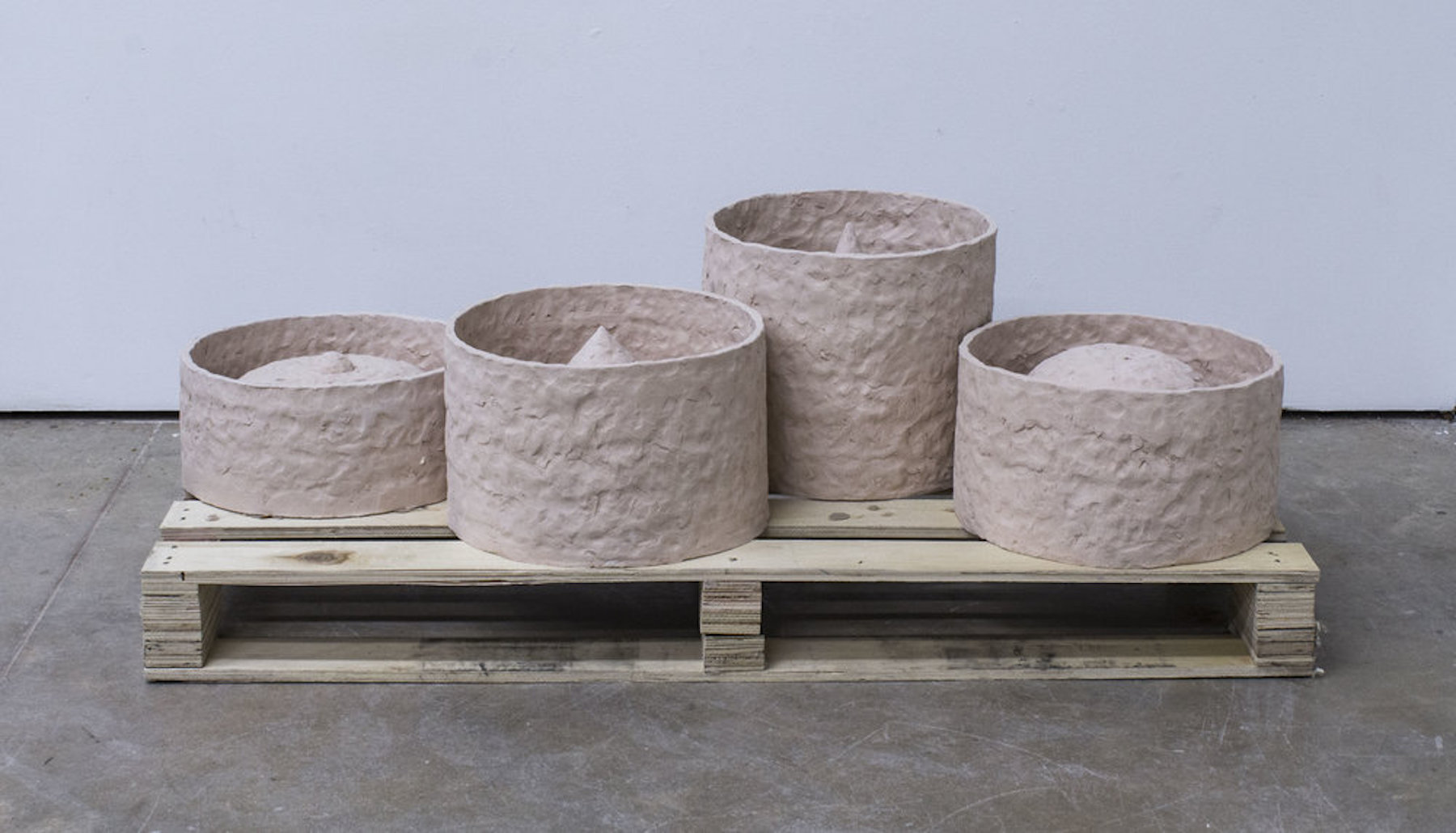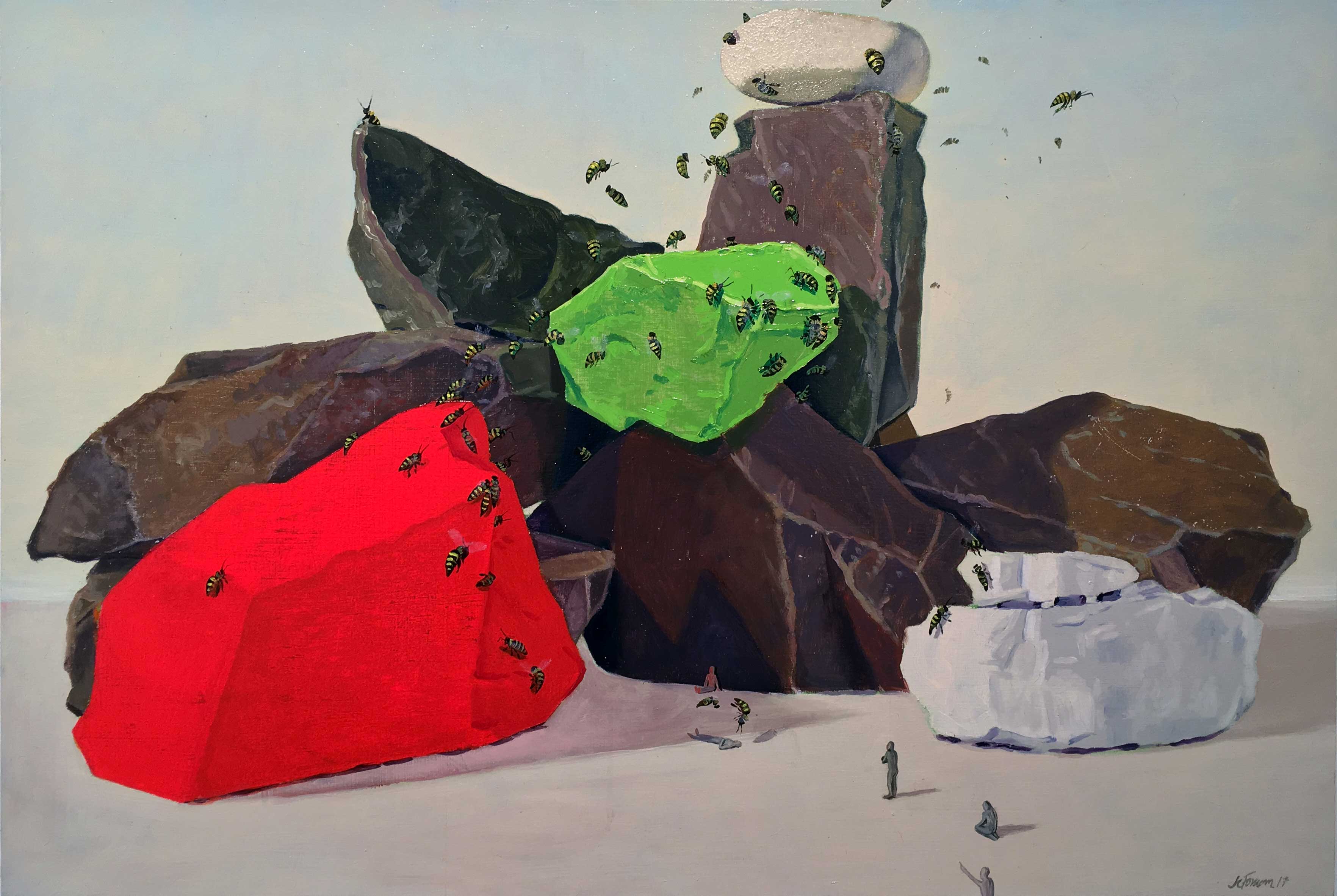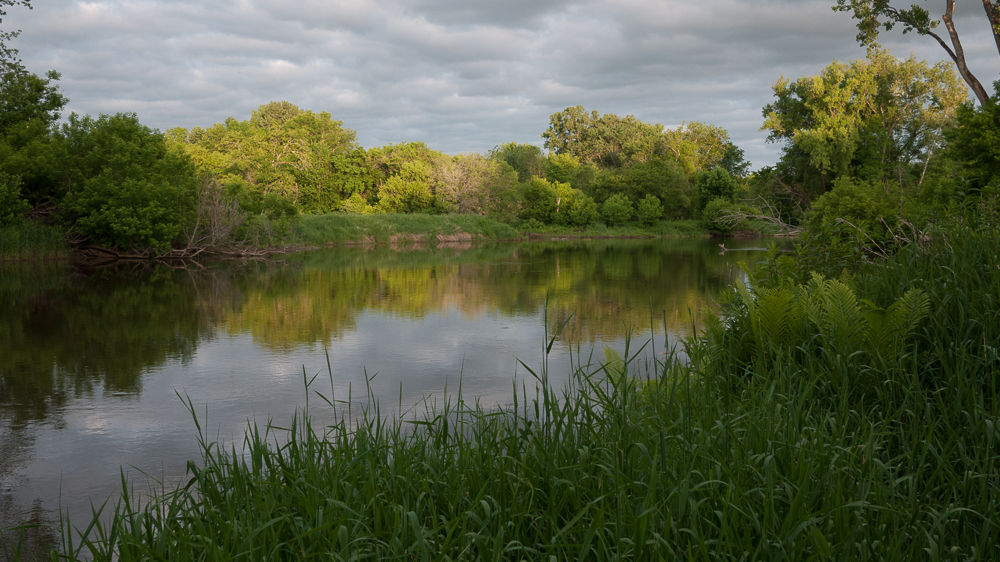- Home
- Student Life
- Campus Experience
- Daniel Arts Center
- Exhibitions
- Faculty in the Arts
Faculty in the Arts
November 3 - December 20, 2017

Brett Evans, Artist-in-Residence in Ceramics
What I make investigates relationships of form, color, materials, space, and place. When making and arranging each composition I am interested in following ‘gut’ reactions that I hope to be honest to the sum total my personal experience, and what I hope to experience. I do this through meditated editing and rearranging until I feel that I have achieved a piece that is on the edge of seriousness and quiet peculiarity. Often when I am making I think of quotidian poetry and how objects and arrangements can reflect the feelings associated with this genre.
Brett Evans holds a BFA in Ceramics/Sculpture from Brigham Young University in Idaho and has held residencies and teaching positions at the University of Arkansas and the Archie Bray Foundation in Montana.

Jacob Fossum, Faculty in Painting and Drawing
Currently my work explores archaic values surrounding observation, worship, and nature. I attempt to access a state of mind void of culture where the individual is the Shaman, Guru, Priest or Witch; where truth only exists as self-realization. The creation and intense observation of a still life is my way into this exploration. I have chosen the natural form of rocks to represent an environment void of culture and to induce a Shamanic-like journey through form, color, and space. This journey relies heavily on the Biocentric principle that our external and internal perceptions are inextricably intertwined and cannot be separated. The use of neon spray paint and glitter are meant to represent the queer nature of the endeavor and my desire to play with questions rather than answer them. My distrust of answers is best described by Terence McKenna when talking about the psychedelic journey, “It’s like building a bonfire bigger and bigger only to discover there’s an awful lot of darkness.”
Jacob Fossum received his MFA from the Maryland Institute College of Art and has held artist residencies in Iceland and Ireland.

Dan Karp, Faculty in Photography
I do not consider myself a landscape photographer. I've always been more interested in people. But in the past year or so I've found myself drawn to make photographs of the land around me and people's interactions with it. The orchard image was made with film and an 8x10 view camera. The Ashley Falls image is digital and was loosely inspired by the Hudson River School of landscape painters. This body of work is in it's early stages but I will continue to use film. The slower process suits the work and the contemplative process of making it.
Dan Karp has taught alternative processes in film and digital photography at Simon’s Rock since 2009. He has worked in film and media for over 20 years, notably on set productions for special effects legend Doug Trumbull and acclaimed photographer Gregory Crewdson.
Tony Kirk, Faculty in Printmaking
Ecce Homo, an etching and aquatint, juxtaposes an etched section of Rembrandt’s Ecce Homo with an image of a prisoner being tortured by the U.S. military police at the infamous Abu Ghraib prison during the U.S. military occupation of Iraq. The two incidents are two thousand years apart but are linked through the fact that two occupation armies, the Romans in Palestine and the U.S. army in Iraq, meted out their own justice. Curiously the Iraqi prisoner with hands outstretched and dressed like a priest at an altar, minus the hood, is being electrocuted by wires attached to his hands. Not quite the nails of crucifixion but a parallel idea.
Tony Kirk is a master printer, teacher, artist, and collaborator in intaglio and relief editions with leading and emerging artists. He was the head of the etching department at Tyler Graphics from 1988 until 2000 during which time he worked on major projects by artists such as Frank Stella and Helen Frankenthaler.

Ben Krupka, Faculty in Ceramics
For three years I have worked with steel, lumber, and concrete--rigid industrial materials that erase the presence of the human hand. This new body of work is a return to more natural forms. The technique, referencing Korea’s Buncheong ware from the Joseon Dynasty (1392-1910), uses stoneware clay, white slip, and clear glaze to produce organic, unrefined peasant-ware. Sensual and imperfect, these pots record the evidence of human touch: the marks of the maker, the preservation of a moment.
Ben Krupka received his MFA from Utah State University. He has held two residencies at the Archie Bray Foundation in Montana and he was also a resident artist and visiting faculty at King Mongkut’s University of Technology in Bangkok, Thailand.

John Musall, Faculty in Theater/Director of Lighting and Set Design
Based in my practice of lighting for the stage, I paint theatrical scenarios, reworking classic themes of myth, mysticism, and sensuality. My focus for the past 25 years has been painting the human figure bathed in colored incandescent light.
John Musall is a visual and performing artist, uniting his capabilities as a director, designer, writer, and musician, to work collaboratively and as a solo performer. He has designed sets, lighting, and costumes for hundreds of theater and dance productions. His work includes designing for the Merce Cunningham Dance Company and the Bard College theater department.

Monk Schane-Lydon, Faculty in Graphic Design/Instructional Technology Specialist
I create fantasy ray guns out of found objects. Items could include old hard drive parts, umbrella’s, an old speaker and various other household and electronics waste. This Ray Gun(Tesla Ion-Arc Model 001)is part of a series, using a variety of parts and techniques to fabricate science fiction props. I see what fits and what looks like it can pack a wallop. Even if it has parts from an old washing machine. With the amount of detail and engineering in random parts, it seems a shame not to create something out of them.
Monk Schane-Lydon holds a BS in Computer Graphics and Animation from Springfield College and a MS in Communication and Information Management from Baypath University.